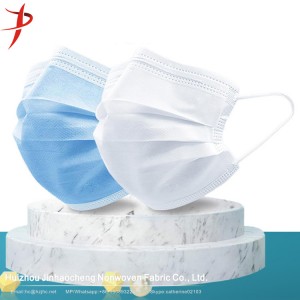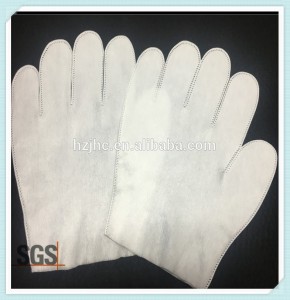Spunlaced nonwovens is one of many nonwovens. We often use spunlaced nonwovens in our daily life, such as wet wipes, clean wipes, disposable face towels, mask paper and so on. The following content will introduce the advantages of spunlaced nonwovens in the market.
Global coverage
Spunlaced nonwovens are used for disposable and durable nonwovens. Overall, disposable spunlaced products have grown strongly since 2014, as they belong to the second tier of mass-market applications, such as baby wipes and women's hygiene products. Disposable nonwovens products tend to be more specialized and have higher profit margins than durable nonwovens products.
Growing demand for these disposable products from Asia's emerging and aspiring middle class makes it the largest regional market and producer of spunlaced nonwovens. There are 277 confirmed spunlace production lines in Asia, with a production capacity of about 1070000 tons in 2019. China alone has nearly 200 installed production lines with a nameplate capacity of more than 800000 tons. This will support further growth in demand for nearly 350000 tonnes of spunlaced products in Asia by 2024.
Four end-use markets
The future expansion and profitability of spunlacing will be driven by the evolution of consumer demand, supply cost dynamics and technological innovation. Smithers' expert analysis identified the following major market trends:
More environmentally friendly wipes
The biggest end use of spunlaced nonwovens is wiping towels. This accounts for 63.0% of all spunlace consumption in 2019, of which nearly half is used for baby wipes.
The nonwovens used in baby wipes are mainly spunlaced because of their high strength and softness, although they are expensive and not completely biodegradable.
The three latest innovations in baby wipes around the world are:
"sensitive" products are sold in fragrance-free, alcohol-free, hypoallergenic, mild natural lotions.
Using recycled cotton as raw material to reduce the cost of recycled cotton wipes.
Consumers have begun to recognize Lesserky nonwovens for sustainable basic materials.
The next fiber innovation in baby wipes may be nonwovens made of bio-based polymers. Manufacturers of nonwovens are experimenting with a spunlaced made of polylactic acid (PLA) and negotiating better and more consistent prices for PLA fibers.
Washability
The recent strong demand for wipes has led to a glut of high-performance, low-cost dispersible spunlaced nonwovens for washable wipes-a market once limited by viable dispersible nonwovens substrates. Between 2013 and 2019, at least nine new nonwovens production lines were put into operation, using new technology to flush nonwovens wipes market.
Therefore, washable towel manufacturers are looking for a new market for washable wipes. The main technical objective is to develop modern technology to improve dispersion and washability. If the product can be designed to be as washable as toilet paper, it will avoid potential problems for the wastewater industry and government regulators.
Sustainable hygiene
Sanitation is a relatively new market for spunlace. It is mainly used in the elastic ear piece of diapers / diapers and the second layer of female hygiene products. Compared with spunbonded production, its penetration is limited by production and cost considerations.
Sustainability is increasingly important for disposable products. The European Union adopted its directive on disposable plastics in December 2018. Sanitary napkins are a sanitary product on its initial target list. Manufacturers of health products are also keen to sell more sustainable products to environmentally conscious consumers, although price will remain an equally important factor by 2024.
Drive all market participants to contribute to this goal:
Material suppliers need to identify more sustainable and cheaper fibers and polymers for spunlaced nonwovens.
Equipment suppliers must reduce capital expenditure by providing production lines that are best suited for low-weight hygiene products.
Spunlacing manufacturers must also develop products that use these new raw materials and improved processes to produce lower-cost, softer and sustainable sanitary products.
Sales and marketing personnel must identify regions and consumer groups that are willing to pay a premium for sustainable health products.
High performance in the medical field
The first major market for spunlacing is medical applications, including surgical sheets, surgical gowns, CSR packages and wound dressings. However, many of these end-uses have now been replaced by spinning nonwovens.
In this end-use, spunlacing is unlikely to match the cost of spunlaced nonwovens; medical nonwovens buyers who focus on performance and sustainability must be identified and involved. In order to increase the use of spunlace in medical products, raw material suppliers must identify and provide low-cost, sustainable raw materials that are absorbent and provide structures with higher strength and elasticity than current spunlaced products.
More from Our Portfolio
Post time: Feb-10-2022



